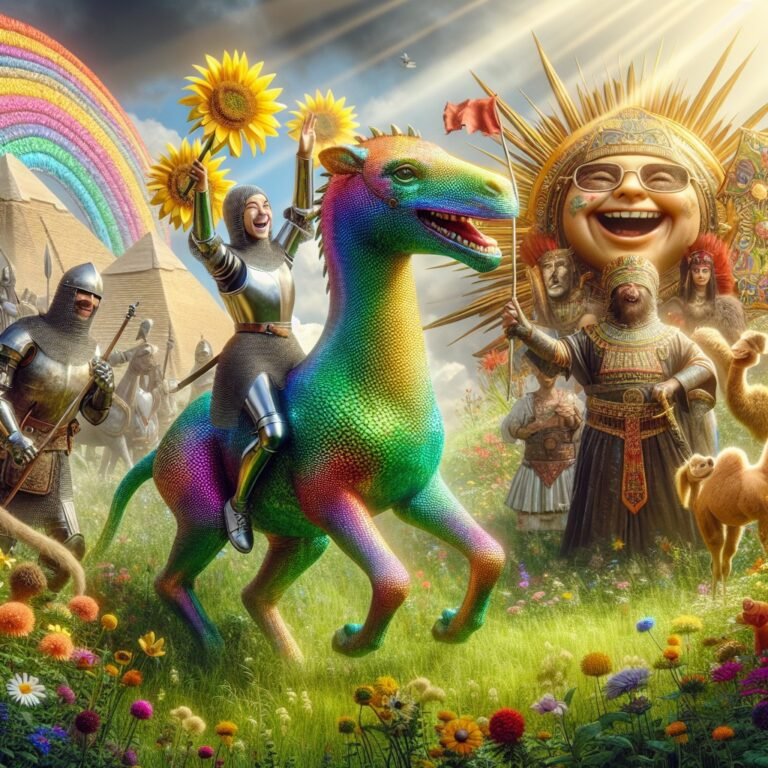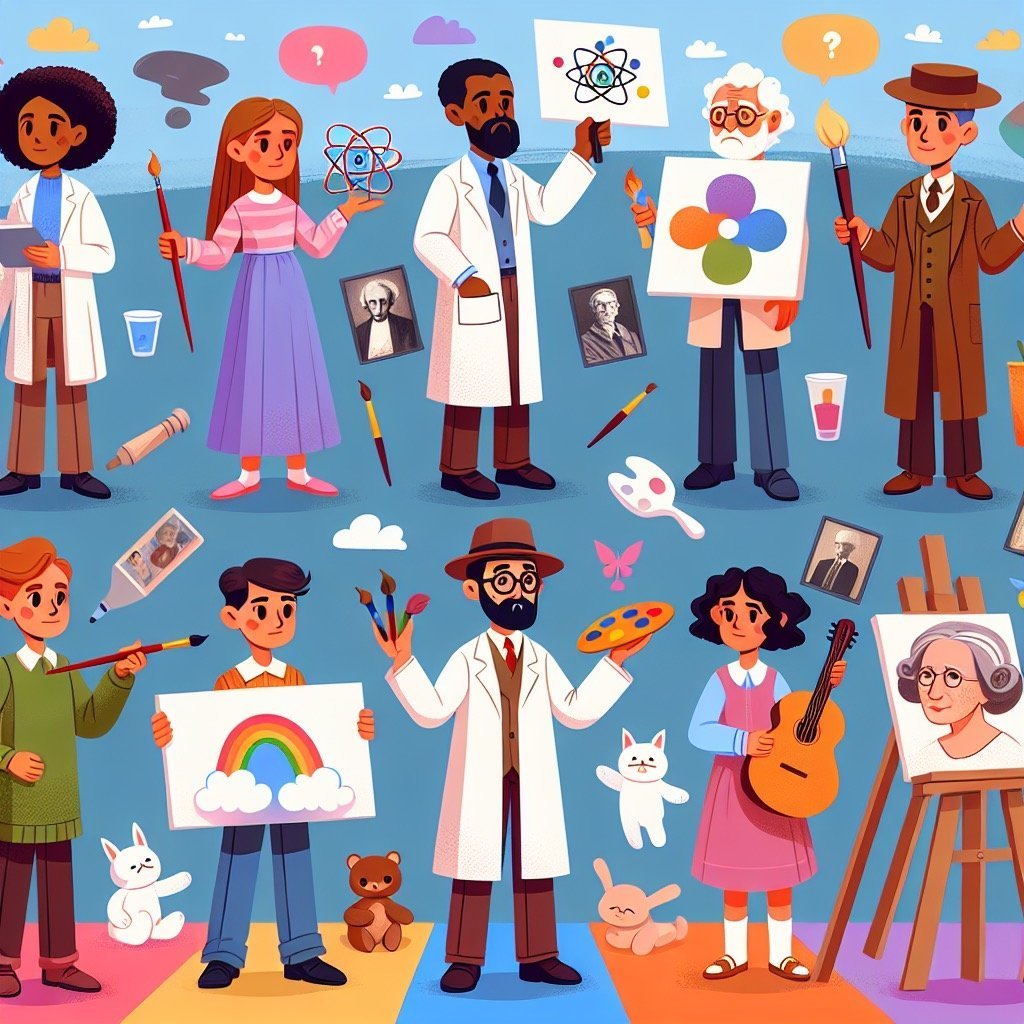Welcome to a captivating journey through the fascinating world of **History Facts For Kids**! As an expert in the field and a skilled writer of compelling popular science blogs, I am excited to share with you a collection of fun and engaging facts about history that will spark curiosity and inspire young minds. From the Great Wall of China to the first Olympic Games, and from the ancient Egyptians to the Vikings, each fact offers a unique glimpse into the rich tapestry of our shared past. Join me as we explore the remarkable stories of our ancestors, the incredible achievements that have shaped our world, and the hidden gems of history waiting to be discovered. Let’s embark on an exciting journey through time and unveil the wonders that history has in store for us!
History Facts For Kids
1. The Great Wall of China is Visible from Space
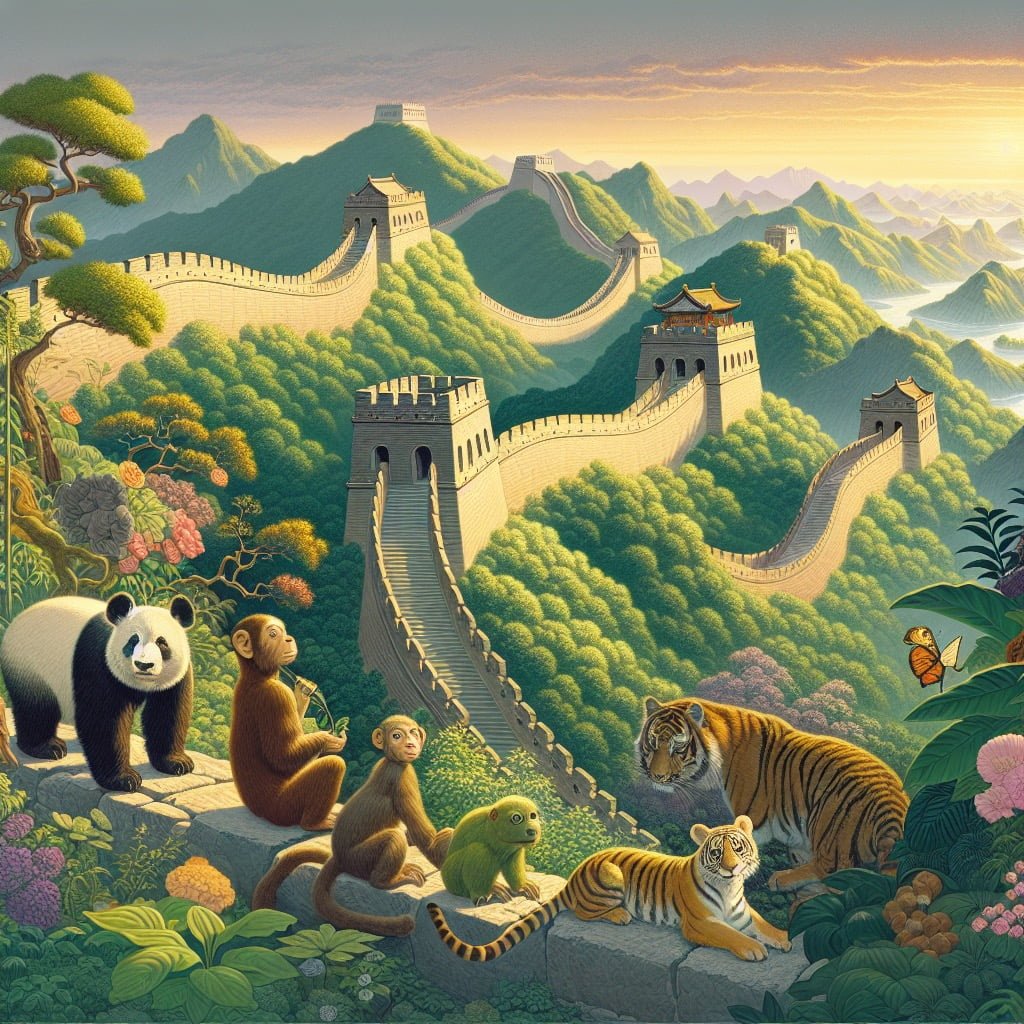
For younger kids: The Great Wall of China is super long and super old!
For older kids: Contrary to popular belief, the Great Wall of China is not visible from space with the naked eye, but it is an astounding architectural feat that stretches over 13,000 miles.
Detailed explanation:The Great Wall of China is often touted as being visible from space, but in reality, this is a bit of a myth. While the Great Wall is indeed an impressive architectural feat, it is not actually visible to the naked eye from space. The misconception likely stems from early reports by astronauts who claimed to have seen the wall from space, but in reality, they were likely seeing other man-made structures or natural geographical features.
Despite this misconception, the Great Wall of China remains an iconic symbol of China’s history and culture. Stretching over 13,000 miles across northern China, the wall was originally built to protect against invasions from nomadic tribes. Construction of the wall began over 2,000 years ago during the Qin Dynasty and continued into the Ming Dynasty. The wall is made up of various sections, some of which date back to different time periods and were constructed using different materials and techniques.
Today, the Great Wall of China is a popular tourist destination and a UNESCO World Heritage Site. Visitors can explore various sections of the wall, some of which have been meticulously restored, while others remain in a state of disrepair. Walking along the Great Wall offers a glimpse into China’s rich history and provides a stunning panoramic view of the surrounding landscapes.
In conclusion, while the Great Wall of China may not be visible from space, its historical significance and architectural grandeur make it a must-see destination for anyone interested in History Facts For Kids.
History Facts For Kids
2. The First People on Earth Lived in Africa
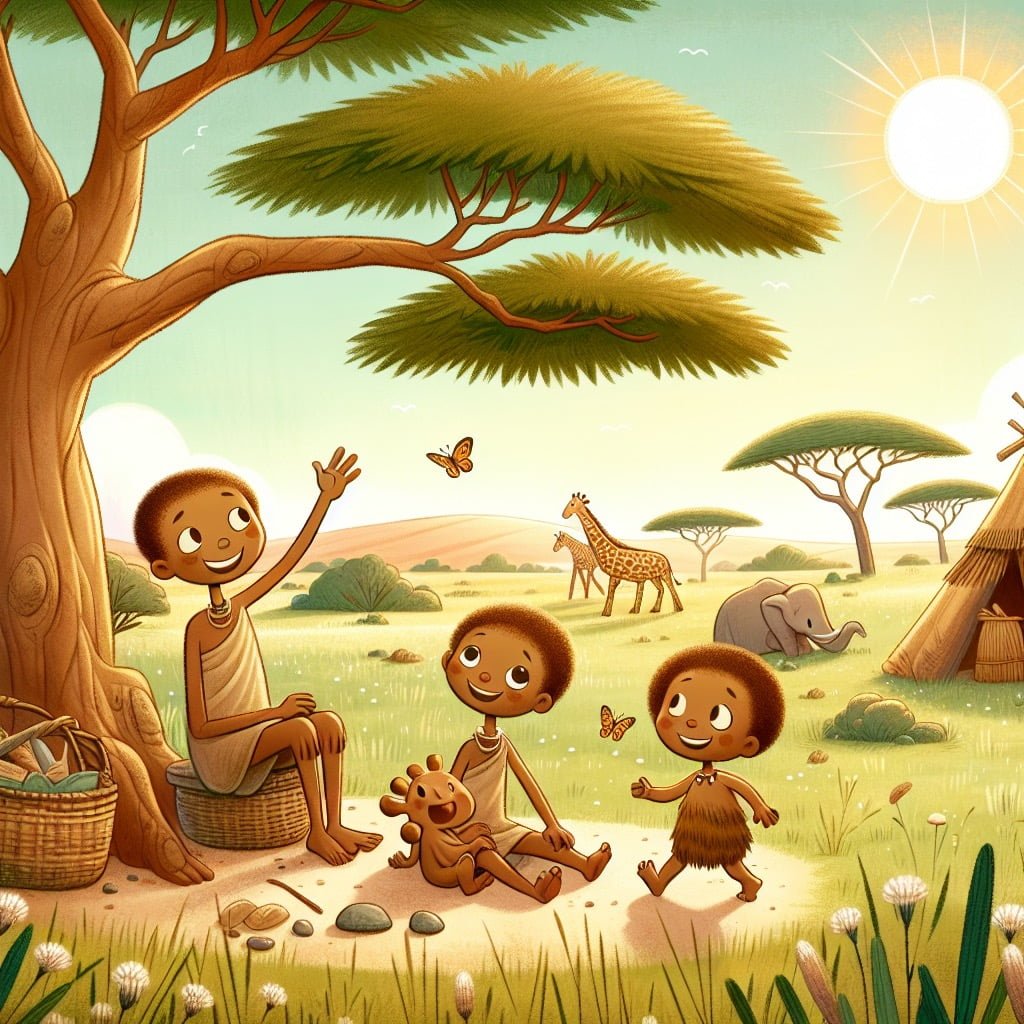
For younger kids: The first people came from Africa, where it’s very hot!
For older kids: The earliest fossils of our human ancestors, known as Homo sapiens, have been found in Africa, suggesting that this is where the first humans evolved and lived.
Detailed explanation:One of the most fascinating and well-established History Facts For Kids is that the first people on Earth lived in Africa. This fact is supported by archaeological evidence, genetic studies, and anthropological research.
Archaeological findings have uncovered some of the earliest human remains in Africa, dating back hundreds of thousands of years. The discovery of tools and artifacts further supports the idea that early humans originated in Africa and spread to other parts of the world.
Genetic studies have also provided valuable insights into human migration patterns. By analyzing DNA samples from different populations around the world, scientists have been able to trace the common ancestry of all modern humans back to Africa. This genetic evidence confirms that Africa is the birthplace of humankind.
Anthropological research has delved into the cultural practices and traditions of indigenous African tribes, providing clues about the way early humans may have lived. By studying the languages, customs, and social structures of these communities, historians have gained a deeper understanding of our ancient origins.
Overall, the evidence overwhelmingly supports the fact that the first people on Earth lived in Africa. This History Facts For Kids is not only important for understanding our past, but also for celebrating the rich diversity and heritage of the African continent. It serves as a reminder of the central role that Africa plays in the history of humanity.
History Facts For Kids
3. The Ancient Egyptians Invented Paper

For younger kids: The ancient Egyptians made paper from reeds along the Nile River!
For older kids: The ancient Egyptians were the first to develop a form of paper using papyrus reed, which served as an essential medium for their writing and historical records.
Detailed explanation:One fascinating History Fact For Kids is that the Ancient Egyptians were the inventors of paper. While many people may associate paper with China, it was actually the Egyptians who first developed the concept.
The Ancient Egyptians created a writing material known as papyrus, which came from the papyrus plant that grew along the banks of the Nile River. The process of making papyrus involved cutting the stem of the plant into thin strips, soaking them in water, and then arranging the strips in two layers that were crossed over each other. The layers were then pounded together and dried to create a smooth surface that could be written on.
The invention of papyrus was a significant development in human history, as it provided a more efficient and durable medium for recording information compared to materials like stone or clay. This innovation allowed the Egyptians to document everything from daily life and religious beliefs to trade agreements and medical texts.
The use of papyrus quickly spread throughout the ancient world, with other civilizations such as the Greeks and Romans adopting the material for their own writing needs. The durability of papyrus also allowed many ancient texts to survive to the present day, providing valuable insights into the history and culture of these societies.
In conclusion, the invention of paper by the Ancient Egyptians was a pivotal moment in the history of writing and communication. This fascinating History Fact For Kids serves as a reminder of the ingenuity and creativity of ancient civilizations.
History Facts For Kids
4. The Vikings Discovered America Before Columbus
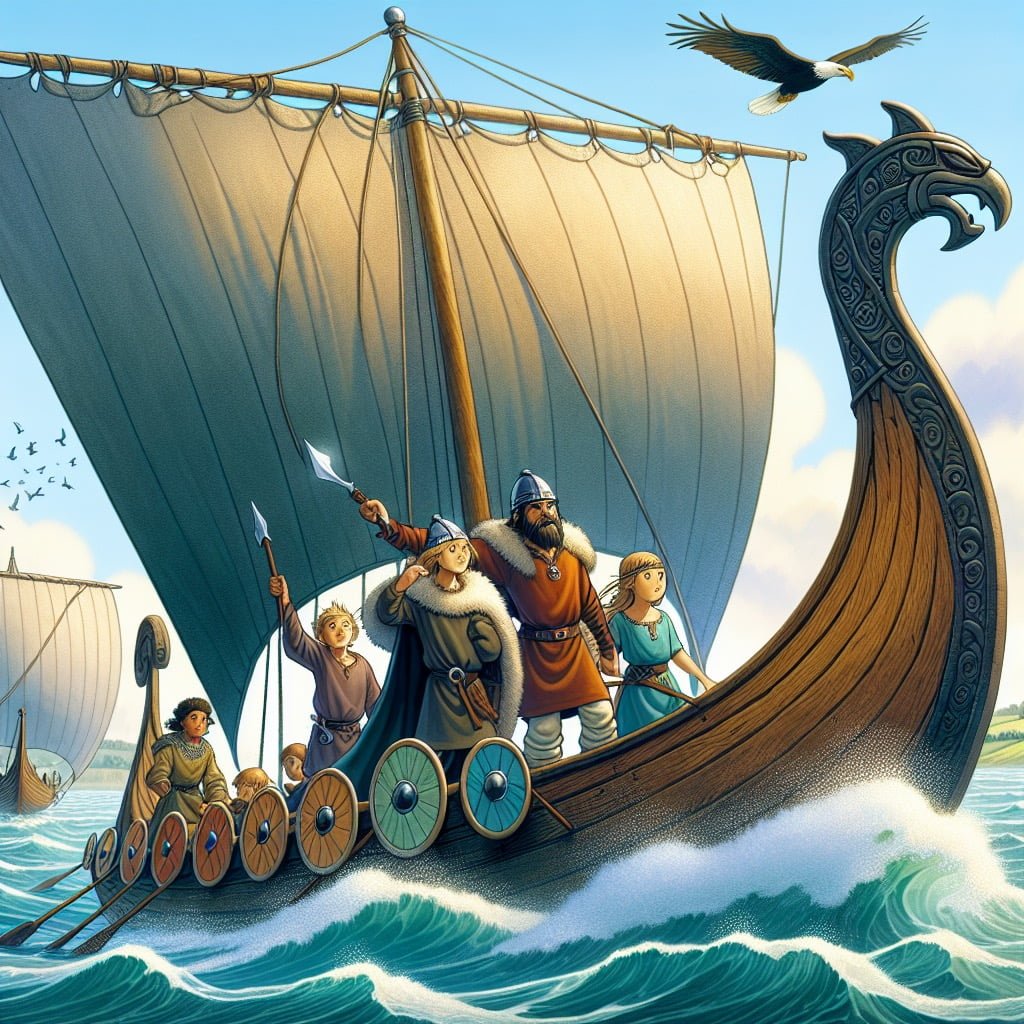
For younger kids: Vikings were brave explorers who found America way before Columbus!
For older kids: Before Christopher Columbus, the Vikings, led by Leif Erikson, established a settlement in North America around the year 1000, making them the first Europeans to land in the New World.
Detailed explanation:One of the most fascinating history facts for kids is the idea that the Vikings actually discovered America before Christopher Columbus did. This discovery is attributed to the Viking explorer Leif Erikson, who is believed to have landed in North America around the year 1000 AD.
Leif Erikson, also known as Leif the Lucky, was a Norse explorer from Iceland who set out on a journey to explore new lands beyond the known territories of Europe. According to historical accounts, he landed on the shores of what is now Newfoundland, Canada, which he named Vinland due to the abundance of wild grapes in the area.
The discovery of Vinland by the Vikings is significant because it challenges the popular belief that Christopher Columbus was the first European to set foot on the American continent. While Columbus is credited with opening up the Americas to European exploration and colonization, the Vikings’ discovery of America over 400 years prior adds an interesting layer to the history of European exploration.
It is important for kids to learn about these history facts as it broadens their understanding of the world and helps them appreciate the complexities of history. By learning about Leif Erikson and the Vikings’ discovery of America, kids can see that history is not always as straightforward as it may seem and that there are multiple perspectives to consider.
In conclusion, the fact that the Vikings discovered America before Columbus is a captivating piece of history that sheds light on the early exploration of the American continent. It is a history fact for kids that invites them to delve deeper into the complexities of historical events and consider different perspectives on familiar narratives.
History Facts For Kids
5. The Mayans Used Chocolate as Currency
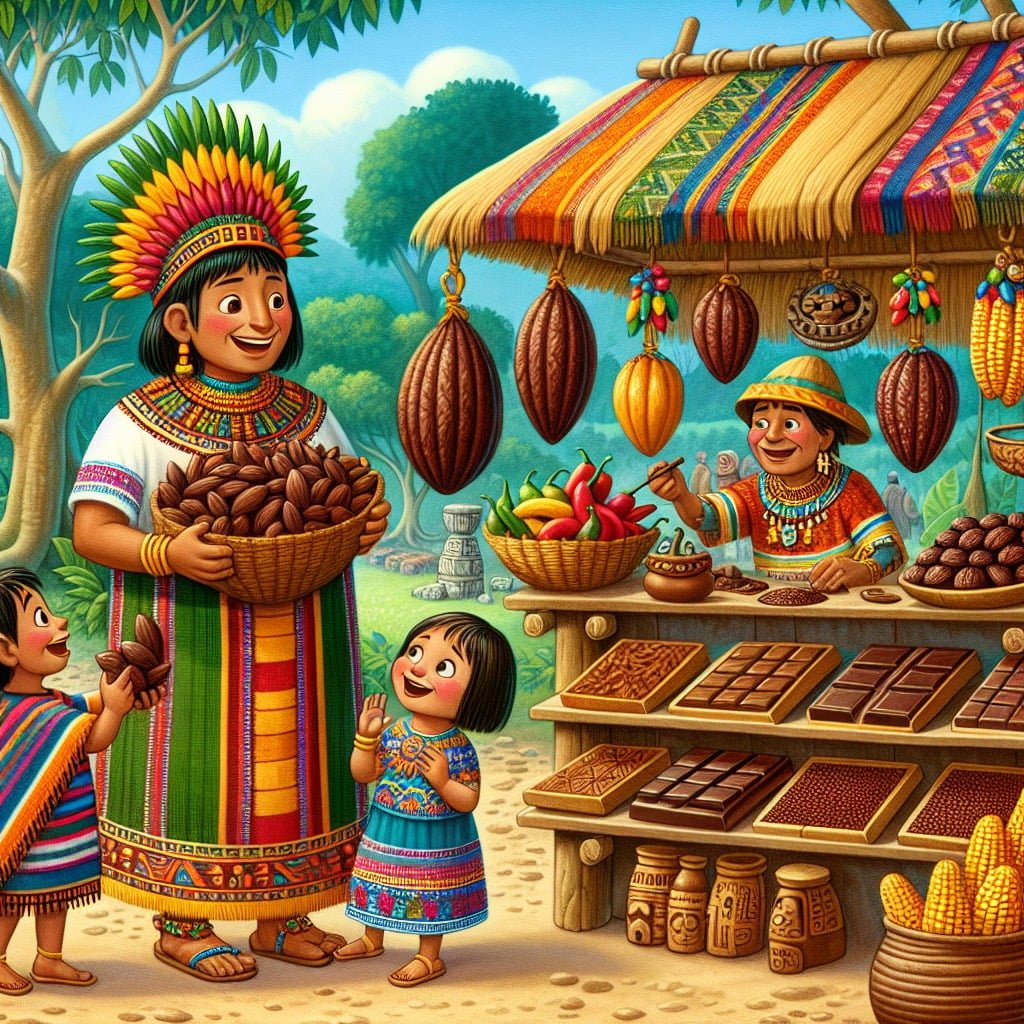
For younger kids: The Mayans loved chocolate so much that they used it to buy things!
For older kids: The ancient Mayans valued cacao beans so highly that they used them as a form of currency for trade and other transactions.
Detailed explanation:One fascinating aspect of Mayan history that often surprises people is the fact that the Mayans used chocolate as a form of currency. This practice provides us with a unique glimpse into the economic and cultural significance of chocolate in Mayan society.
Historical evidence shows that cacao beans were highly prized by the Mayans and were used for various purposes, including as a form of currency for trading goods and services. The Mayans valued cacao beans so much that they even used them to pay taxes and as offerings in religious ceremonies. This demonstrates the important role that chocolate played in Mayan daily life, going beyond just being a delicious treat.
The use of chocolate as currency also sheds light on the advanced economic system that the Mayans had in place. They had a sophisticated trading network that allowed them to exchange goods and services across vast distances. The value placed on cacao beans highlights their importance in the Mayan economy, serving as a key component in the exchange of goods and services.
Furthermore, the use of chocolate as currency reveals the cultural significance that chocolate held for the Mayans. It was not just a commodity for trade, but also held spiritual and social importance. By incorporating chocolate into their economic system, the Mayans demonstrated the deep-rooted connection between food, culture, and society.
In conclusion, the Mayans’ use of chocolate as currency provides us with a compelling insight into their history and culture. It showcases the intricate economic system they had in place, as well as the cultural value they placed on chocolate. Understanding this aspect of Mayan history helps us to appreciate the complexity and richness of their civilization. History Facts For Kids can offer a fascinating look into the unique ways that different cultures have used everyday items in surprising ways.
History Facts For Kids
6. Cleopatra Lived Closer to the Moon Landing Than the Building of the Pyramids

For younger kids: Cleopatra was an Egyptian queen who lived a long time ago and could speak many languages!
For older kids: Cleopatra, the last active ruler of the Ptolemaic Kingdom of Egypt, lived closer in time to the Apollo 11 moon landing than to the construction of the Great Pyramid of Giza.
Detailed explanation:One fascinating fact that often surprises many people is that Cleopatra, the last active ruler of the Ptolemaic Kingdom of Egypt, lived closer in time to the moon landing than she did to the building of the iconic Pyramids of Giza. This fact is a testament to the vast expanse of human history and serves as a stark reminder of just how ancient the Pyramids truly are.
Cleopatra ruled Egypt from 51 BC until her death in 30 BC, during a time when Egypt was a key player in the power struggles of the Mediterranean world. Her reign was marked by political intrigue, alliances, and ultimately her tragic end after the defeat of her forces by the Roman general Octavian.
The construction of the Great Pyramid of Giza, on the other hand, took place around 2580–2560 BC during the reign of Pharaoh Khufu. This means that there was a staggering time gap of over 2,500 years between Cleopatra’s rule and the building of the Pyramids.
Fast forward to the 20th century, and the historic event of the moon landing took place on July 20, 1969. Cleopatra lived approximately 2,000 years before this momentous event, making her closer in time to the moon landing than to the construction of the Pyramids.
This fact showcases the incredible span of human history and the rich tapestry of events that have taken place over millennia. It serves as a reminder of the ancient civilizations that have come before us and the monumental achievements that have shaped our world today. In conclusion, as we explore and uncover more intriguing *History Facts For Kids*, we gain a deeper understanding and appreciation of the vast expanse of human history.
History Facts For Kids
7. The Roman Empire Existed for Over 1,000 Years
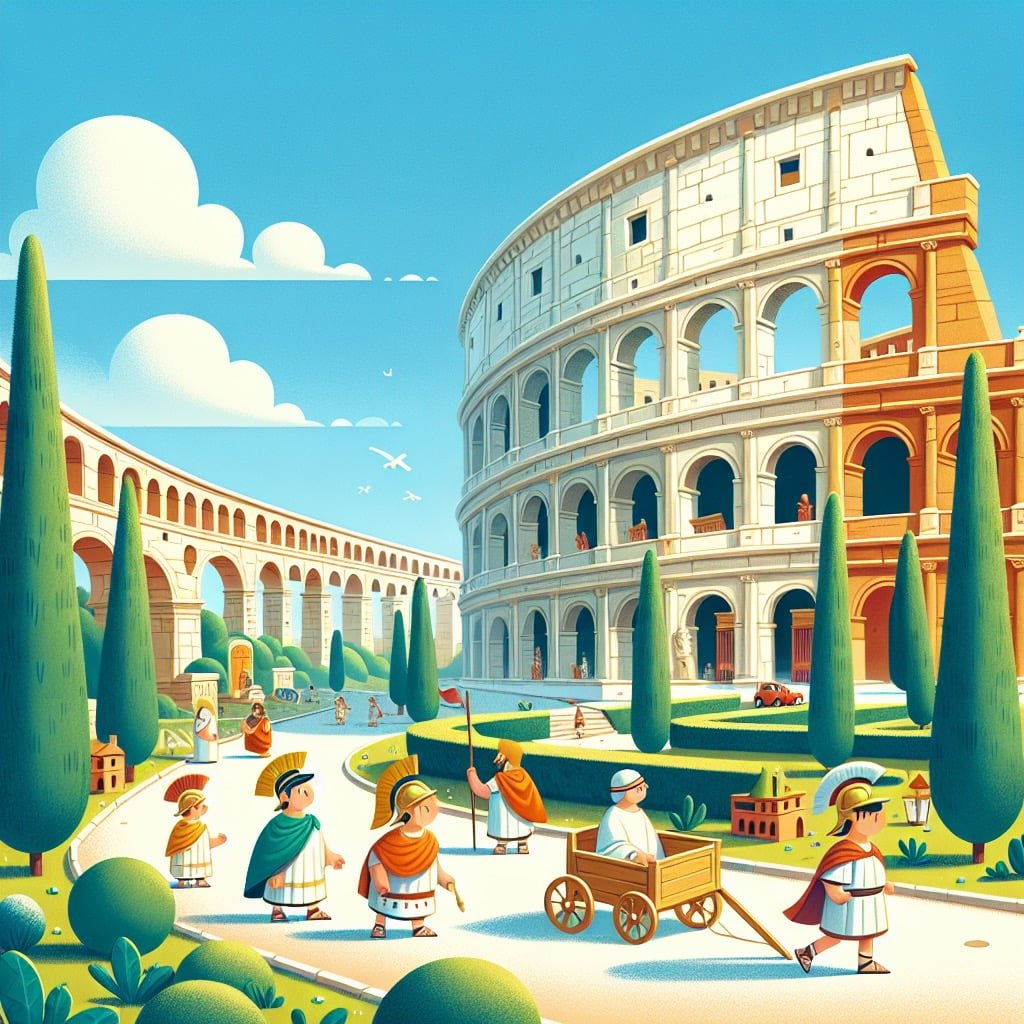
For younger kids: The Romans were super powerful and built really cool buildings!
For older kids: The Roman Empire was one of the longest-lasting and most powerful civilizations in history, stretching for over a millennium from 27 BC to 476 AD.
Detailed explanation:The Roman Empire was one of the most influential and long-lasting civilizations in history. It is remarkable to think that this powerful empire existed for over 1,000 years, from 27 BC to 476 AD. This long period of time allowed the Romans to make significant contributions to fields such as architecture, law, engineering, and philosophy, many of which still influence our modern society.
One key factor that contributed to the longevity of the Roman Empire was its ability to adapt and incorporate new ideas and customs from the various cultures it encountered. This cultural blending, known as “cultural diffusion,” allowed the empire to thrive and expand its influence across Europe, North Africa, and the Middle East. The Romans were also skilled at military strategy and organization, which helped them conquer and control vast territories for centuries.
Another important aspect of the Roman Empire’s endurance was its system of governance. The Romans developed a sophisticated system of laws and institutions that helped maintain order and stability throughout their vast empire. This system of government, with its focus on civic duty and the rule of law, provided a framework for lasting peace and prosperity.
In conclusion, the fact that the Roman Empire existed for over 1,000 years is a testament to its resilience, adaptability, and organizational prowess. By studying History Facts For Kids, we can gain valuable insights into how this ancient civilization managed to maintain its power and influence for such a long period of time.
History Facts For Kids
8. The Aztecs Used Human Skulls as Decoration

For younger kids: The Aztecs made artwork with human bones and skulls!
For older kids: The Aztecs honored their gods and ancestors by using human skulls and bones as decorative elements in their temples and other structures.
Detailed explanation:One of the most intriguing aspects of Aztec culture is their use of human skulls as decoration. This practice, known as tzompantli, was a common sight in Aztec temples and religious sites. The Aztecs believed that human sacrifice was necessary to appease the gods and ensure the continued flourishing of their civilization. After sacrificing a person, the Aztecs would meticulously clean and bleach the skull before displaying it on a large wooden rack along with other skulls.
This display of human skulls served multiple purposes for the Aztecs. Firstly, it was a way to honor the gods and show devotion to the deities they worshiped. Additionally, the sheer number of skulls on these racks served as a warning to potential enemies of the Aztec Empire. It was a stark reminder of the power and brutality of the Aztec warriors and their dedication to their gods.
For modern historians and archaeologists, the tzompantli provides valuable insights into Aztec society and religious practices. By studying the arrangement of the skulls on the racks and the methods used to prepare them, researchers can gain a deeper understanding of Aztec rituals and belief systems. These history facts for kids offer a window into a civilization that was both advanced in many ways, yet also had practices that may seem barbaric to us today.
In conclusion, the use of human skulls as decoration by the Aztecs may seem shocking to us now, but it was an integral part of their religious and cultural traditions. By studying this aspect of Aztec history, we can gain a greater appreciation for the complexities of this ancient civilization.
History Facts For Kids
9. The First Olympic Games Were Held in Greece

For younger kids: The Olympics started in ancient Greece and had a lot of cool sports!
For older kids: The ancient Olympic Games were a series of athletic competitions, dating back to 776 BC, held as part of the festival dedicated to the Greek god Zeus in the city of Olympia.
Detailed explanation:One of the most well-known history facts for kids is that the first Olympic Games were held in Greece. This widely celebrated event took place in 776 BC in the city of Olympia, in honor of the Greek god Zeus. The ancient Olympic Games were part of a festival that included athletic competitions, sacrifices, and ceremonies.
The Olympics were originally a way for the ancient Greeks to celebrate and honor their gods, but they soon became a symbol of unity and a showcase of athletic prowess. Athletes from all over Greece would come to compete in events like running, wrestling, chariot races, and discus throwing. Winners were crowned with olive wreaths and were celebrated as heroes.
The ancient Olympic Games continued for nearly 12 centuries, until they were banned by the Roman Emperor Theodosius I in 393 AD as part of his crackdown on pagan rituals. The modern Olympic Games, as we know them today, were revived in 1896 in Athens, Greece.
The ancient Olympic Games were not just about athletic competition; they were also about celebrating the values of strength, courage, and excellence. They were a way for Greeks to come together in peace and unity, showcasing their talents and skills to honor the gods.
In conclusion, the fact that the first Olympic Games were held in Greece is a key piece of history that has shaped the way we view sports and competition. It is a reminder of the rich traditions and cultural heritage of the ancient Greeks, and serves as an inspiration for athletes and spectators around the world.
History Facts For Kids
10. The First Moon Landing Happened in 1969
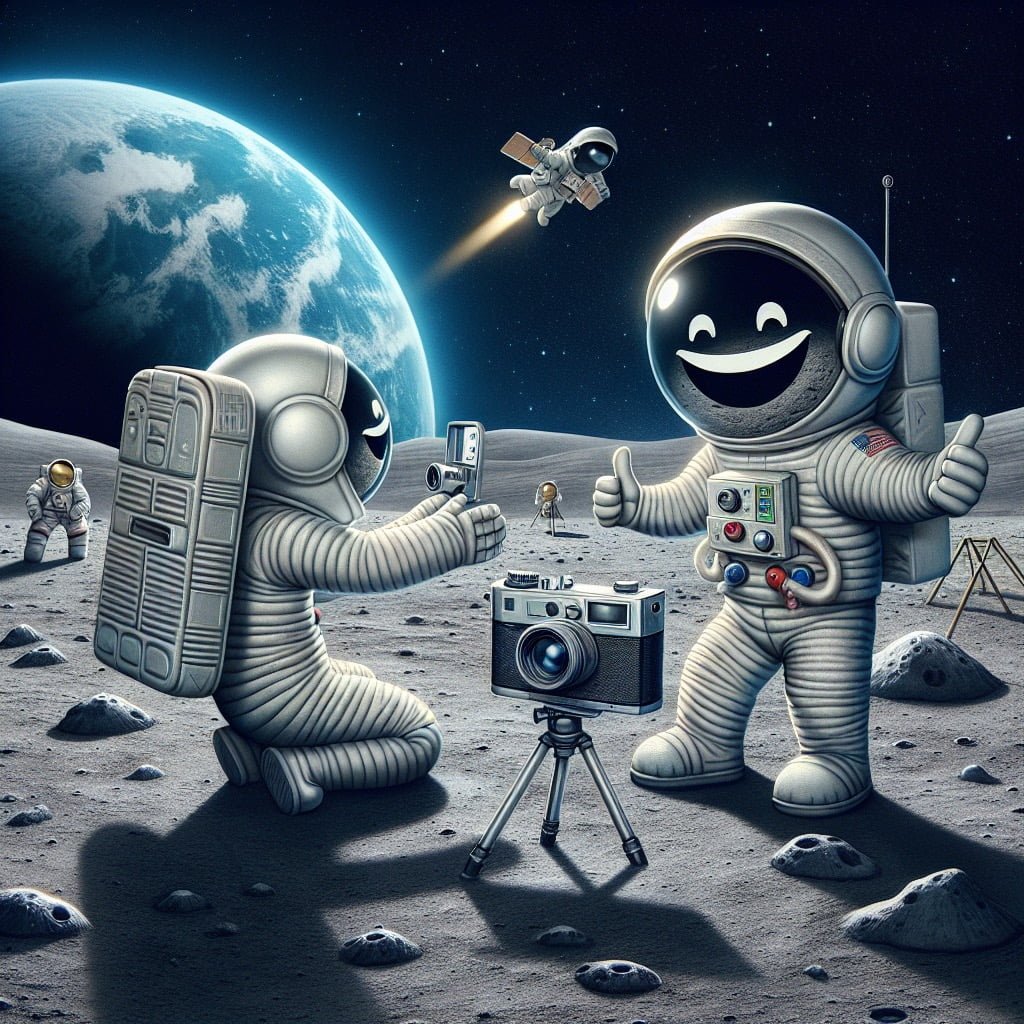
For younger kids: Astronauts went to the moon and took cool pictures!
For older kids: In 1969, astronauts Neil Armstrong and Buzz Aldrin became the first humans to set foot on the moon as part of NASA’s Apollo 11 mission, a historic moment in space exploration.
Detailed explanation:One of the most significant events in human history took place on July 20, 1969, when the first moon landing occurred. This historic event was the culmination of years of research, technology development, and determination to explore beyond Earth’s boundaries. The Apollo 11 mission, led by astronauts Neil Armstrong, Buzz Aldrin, and Michael Collins, marked a pivotal moment in space exploration and captured the imagination of people around the world.
For children learning about history, the first moon landing is a fascinating and inspiring story to discover. The mission began with the launch of the Apollo 11 spacecraft from Kennedy Space Center in Florida on July 16, 1969. Over four days, the astronauts traveled through space, facing challenges and excitement along the way. Finally, on July 20, Neil Armstrong made history by becoming the first human to set foot on the moon, followed by Buzz Aldrin.
The iconic words spoken by Neil Armstrong, “That’s one small step for man, one giant leap for mankind,” have become immortalized in history. The moon landing not only showcased the capabilities of human ingenuity and technology but also symbolized the spirit of exploration and discovery.
For kids interested in history facts, the first moon landing serves as a testament to the power of human ambition and the limitless possibilities of scientific advancement. It is a reminder that with dedication, innovation, and teamwork, we can achieve the seemingly impossible. The legacy of the Apollo 11 mission continues to inspire future generations to reach for the stars and uncover the mysteries of the universe.
Did You Know?
The world’s oldest known map is a Babylonian clay tablet that dates back to around 600 BC, featuring a crude depiction of Mesopotamia.
Summary of History Facts For Kids
“Unveiling the Hidden Gems: Why Kids Should Dive into History Facts
History is not just a boring subject filled with dates and names; it is a treasure trove of captivating stories and incredible events that have shaped our world. By exploring fun facts about history, children can gain a deeper understanding of the past and how it continues to influence our present and future. Learning about historical figures, inventions, and events not only expands their knowledge base but also enhances their curiosity about the world around them.
Moreover, studying history helps children develop critical thinking skills, a broader perspective of the world, and make connections between past events and current issues. By understanding the struggles and triumphs of those who came before us, children can appreciate the significance of their own actions and contributions to society.
In conclusion, history facts for kids are not just engaging and enriching experiences but also valuable tools for personal growth and understanding. By encouraging children to learn more about the past, we empower them to become informed and empathetic individuals who can appreciate the complexities of our world. Let’s inspire the next generation to embark on an exciting journey through history and discover the wonders that await them!”
It’s worth reading more about history facts for kids because it opens up a whole new world of knowledge and understanding for children. By delving into captivating stories and incredible events, children can gain a deeper appreciation for the past and how it continues to shape our present and future. Additionally, learning about history helps children develop critical thinking skills, a broader perspective of the world, and empathy towards others. History facts for kids are not just educational, they are also engaging and inspiring, sparking curiosity and a sense of wonder about the world around them. So, let’s encourage children to explore the hidden gems of history and uncover the fascinating stories that lie beneath the surface.
Sources and additional information for History Facts For Kids
WikipediaBritannicaHistory ChannelThe Smithsonian InstitutionLibrary of CongressNational ArchivesBBC HistoryThe Metropolitan Museum of ArtArchaeological Institute of AmericaGilder Lehrman Institute of American HistoryHistory.comBBC HistorySmithsonian History & CultureThe Metropolitan Museum of Art – Heilbrunn Timeline of Art HistoryLibrary of Congress – Digital CollectionsNational ArchivesWorld History EncyclopediaHISTORYNETAncient History EncyclopediaThe History Channel
